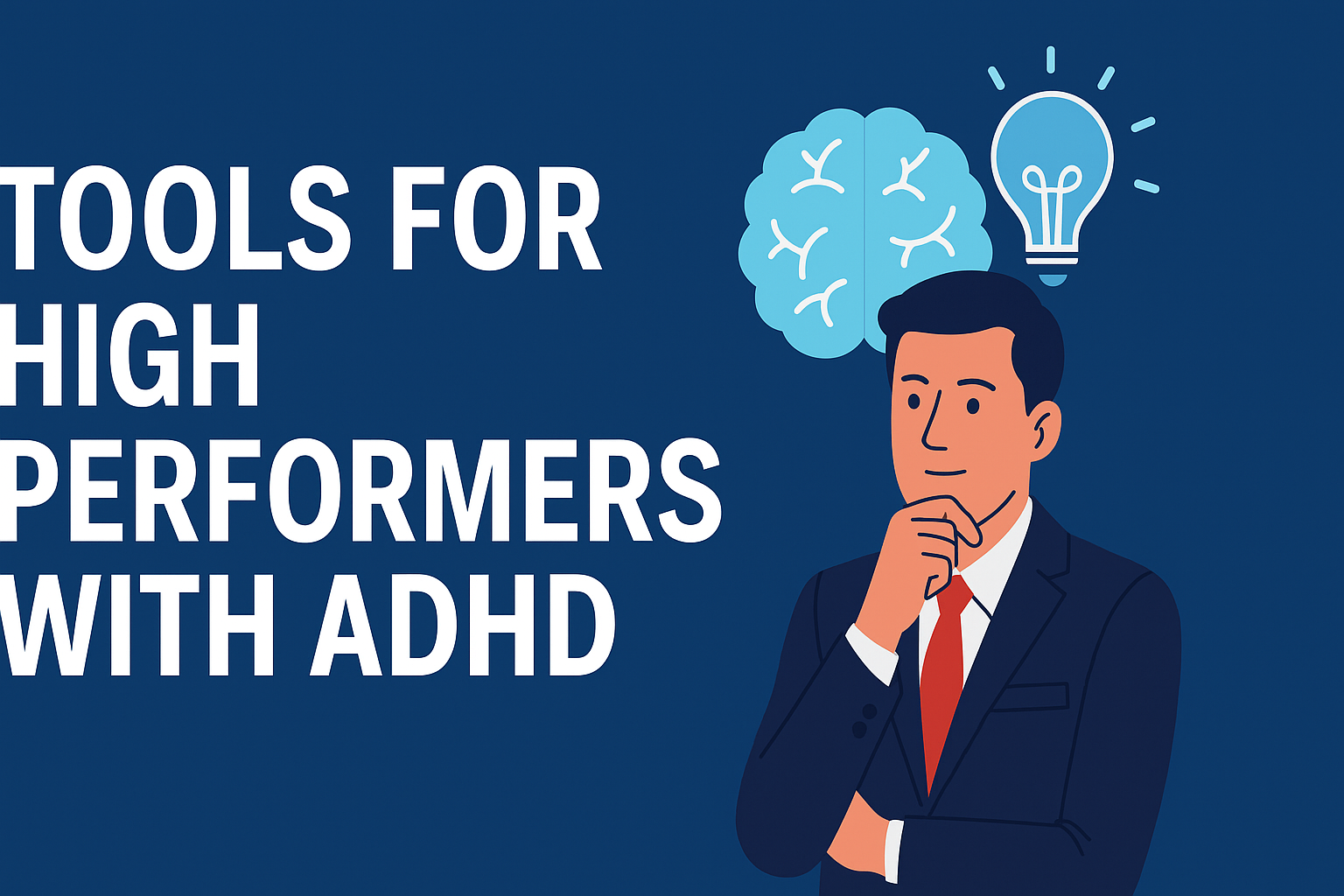Tools For High Performers with ADHD
Optimize Your Attention. Lead with Clarity
By Adam Meyersieck | The Neurodiversity Newsletter
We talk a lot about executive function: attention control, working memory, planning, and organization. But too often we overlook the invisible executive function that holds the rest together: emotional regulation.
For many high-performing adults with ADHD, emotional regulation (not distraction) is the biggest obstacle to sustained success.
Yes, missed deadlines and task paralysis do matter. But it’s the internal emotional swings like the shame spiral after procrastination, explosive frustration after a misstep, anxious freeze when feedback arrives - these are the things that can cause the most disruption to performance, relationships, and confidence.
Let’s unpack this often-ignored function of the executive brain and how to coach through it.
What is Emotional Dysregulation in ADHD?
Emotional dysregulation refers to difficulty managing the intensity, duration, or appropriateness of emotional responses. In ADHD, this might look like:
Overreacting to minor criticism
Withdrawing or freezing under pressure
Inability to let go of a perceived failure
Rumination that derails task engagement
Low frustration tolerance that leads to conflict or avoidance
To others, this might appear as immaturity or weakness, but it's not. It’s neurological.
Research shows that the brain’s emotional centers (amygdala) are often overactive in ADHD, while the prefrontal cortex (which regulates those responses) can be underactive or inefficient—especially under stress (Shaw et al., 2014).
This mismatch leads to emotional responses that are quick to ignite and slow to settle.
Emotional dysregulation fuels executive dysfunction. When someone’s emotions are hijacked, their cognitive abilities tend to go offline. Along with it- planning, prioritizing, and focusing vanish until the system calms.
Why It Matters for High Performers
Many ADHD adults are intelligent, driven, and creative. They have learned to mask or overcompensate for their challenges. But masking takes energy, and when emotional regulation breaks down, the mask disappears.
Coaching clients in leadership, medicine, education, or entrepreneurship often describe feeling “embarrassed” by their emotional reactivity or “ashamed” of their inability to shake off anxiety. They say things like:
“I know what to do, but I can’t do it when I’m upset.” “I fall apart over small things.” “I spiral after I mess up.”
Sound familiar? You're not alone.
When emotional regulation breaks down, it creates what I call a performance bottleneck: the mind is capable, but the emotional system isn’t cooperating.
Coaching Strategies That Work
Name the Real Barrier
Start with awareness. Are you truly struggling with time management or with the anxiety, perfectionism, or shame that sits underneath it?
Ask:
“What happens emotionally when you think about this task?” “What would it feel like if this went poorly?” “What would it mean if this went well?”
When clients recognize that emotion is the block rather than ability, the solution becomes more compassionate and more accurate.
Embed Emotional Transitions
People with ADHD often lack emotional transition rituals. They jump from meeting to meeting, task to task, emotion to emotion without pausing.
Introduce 3-minute rituals between tasks:
Deep breathing or a cold splash of water
A quick journaling prompt: “What am I carrying into this next thing?”
Physical movement (10 squats or a short walk)
These small resets help regulate the nervous system and prevent carryover stress from one task to the next.
Reframe the Emotional Narrative
Many ADHD professionals have internalized a “too much” or “not enough” narrative: too emotional, not disciplined enough, too reactive, not focused enough.
As an ADHD Executive coach, I help them rewrite the story.
Try:
“Your emotional intensity isn’t a flaw. It’s energy that just needs structure.” “You don’t need to be less emotional. You need tools to redirect emotion into momentum.” “We’re not eliminating feelings. We’re increasing your ability to stay present with them.”
When you reframe emotion as power rather than a problem, it creates self buy-in for self-regulation practices.
Take Action Today
Ready to make your brain your biggest advantage? If you're a high performer navigating focus, emotional regulation, or executive functioning challenges, you're not alone and you don't have to figure it out by yourself.
DM me directly or email adam@legacy-ed.com to set up a free discovery call. Let’s build the system your brain actually needs to thrive.
Final Thought
Emotional regulation is the core of executive functioning. Everything orbits around it. Without it, planning, prioritization, focus, and follow-through collapse.
When I support ADHD clients in building emotional awareness, we unlock the rest of their potential. We move beyond productivity hacks and into personal transformation.
So the next time you say to yourself, “I’m just not focused,” dig deeper. Ask yourself about the emotion beneath the surface. Because it’s not about getting more done. It's about feeling safe enough to try.
– Adam

